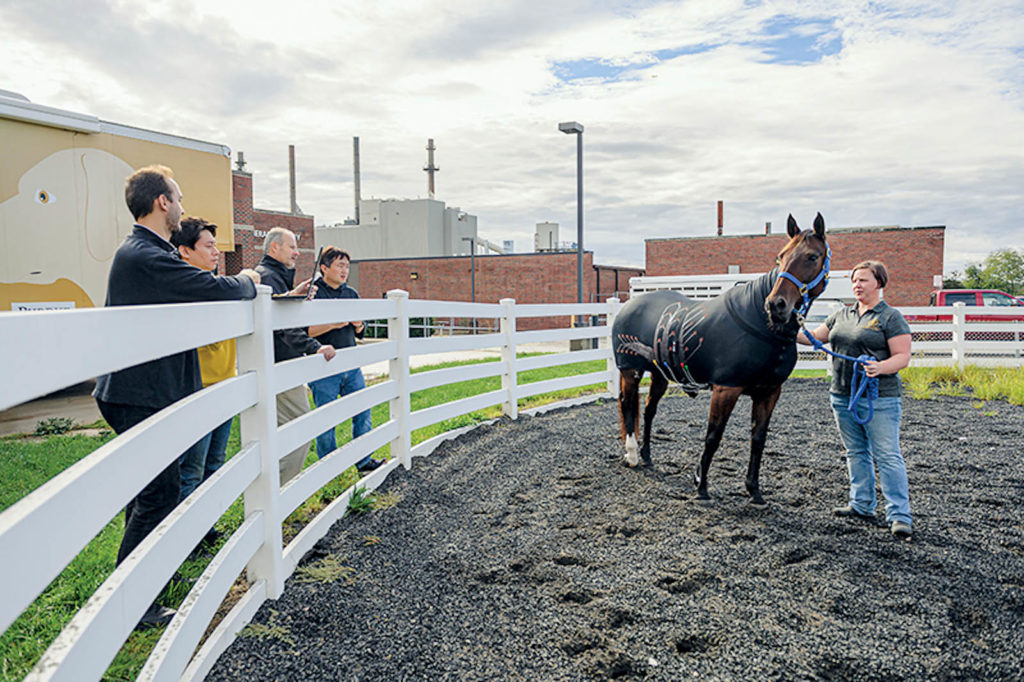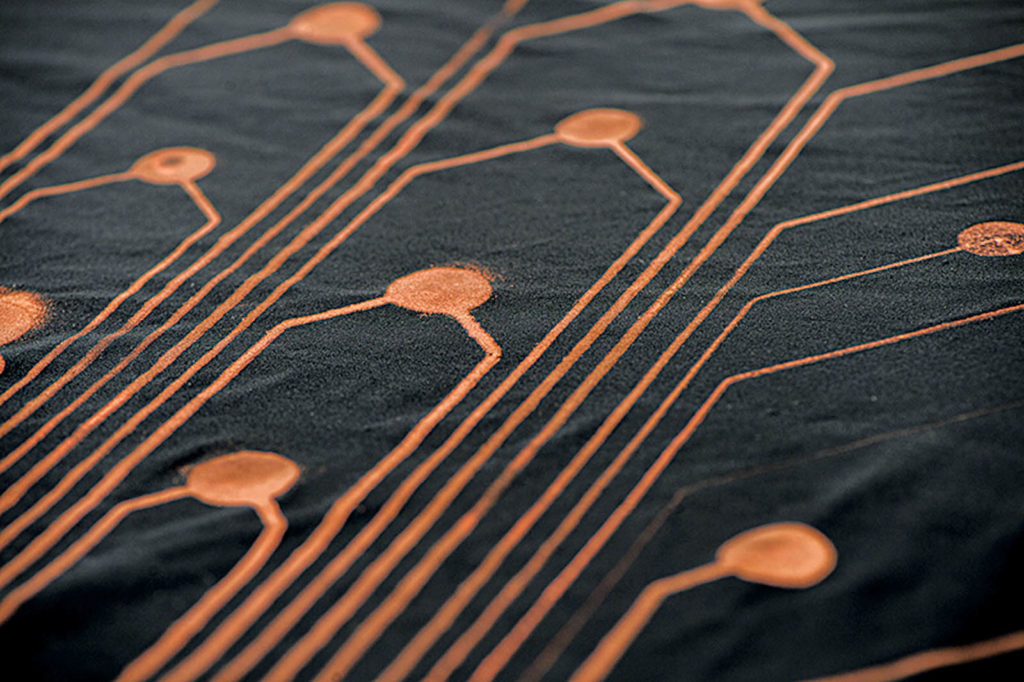
A new study by Purdue University engineers and veterinarians explores how to convert off-the-shelf horse slickers into e-textiles that continuously monitor equine cardiac, respiratory and muscular systems over time under ambulatory conditions. The horse slicker with a specially designed liner could be able to alert the horse’s human caregivers of increasing chronic diseases. To add the e-textile capabilities to the slicker, the Purdue team developed a dual regime spray and technique to directly embed a pre-programmed pattern of functional nanomaterials into the slicker’s fabrics. The e-textile was connected to a separate portable unit that shared vital signs to a laptop via Bluetooth.
Using the e-textile means that veterinarians and their support staff won’t have to shave the horse’s hair or use messy adhesives to place the electrode on the horse’s skin, which makes it more comfortable for the horse.
Chi Hwan Lee, the Leslie A. Geddes associate professor in Purdue’s Weldon School of Biomedical Engineering, says continual monitoring through the e-textile patterns can be useful for long-term management of chronic health conditions in large animals and eventually humans. Lee also has a joint appointment in the School of Mechanical Engineering and a courtesy appointment in the School of Materials Engineering.

According to Lee, adding e-textile properties to existing garments helps scientists, researchers and clinicians take advantage of garments’ already-existing ergonomic designs to secure a commercial grade of wearability, comfortability, air permeability and machine washability.
“These specially designed e-textiles can comfortably fit to the body of humans or large animals under ambulatory conditions to collect bio-signals from the skin such as heart activity from the chest, muscle activity from the limbs, respiration rate from the abdomen or other vital signs in an extremely slight manner,” Lee says. “Our technology will significantly extend the utility of e-textiles into many applications in clinical settings.”
The research team plans to carry the technology over to clothing made for humans.
 TEXTILES.ORG
TEXTILES.ORG


